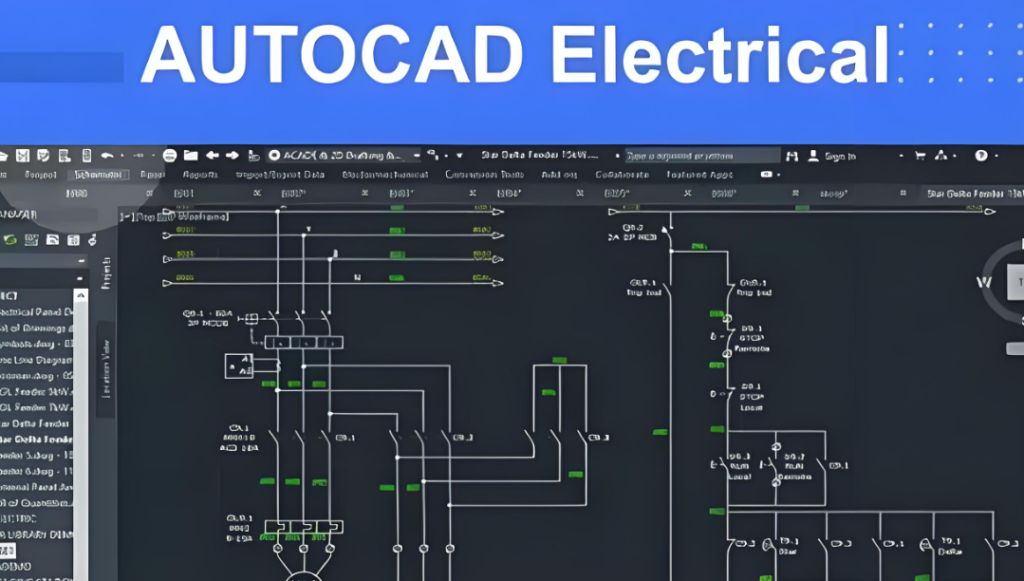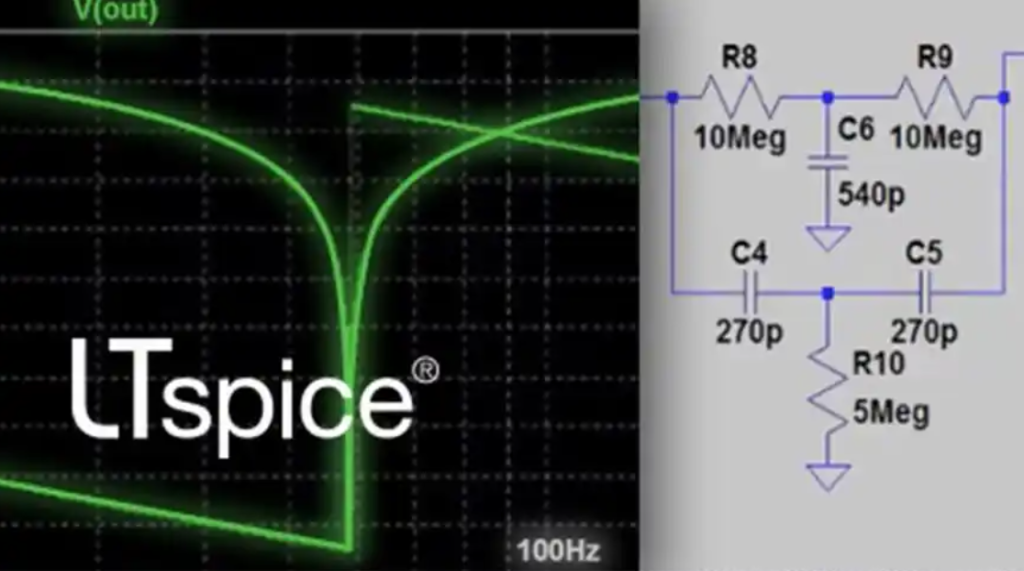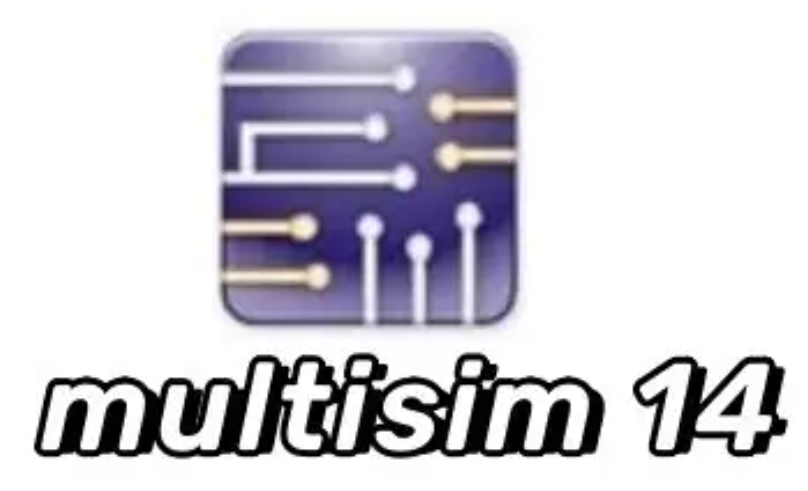
Which Software are Essential for Electrical Engineering Students?
Which Software are Essential for Electrical Engineering Students?
Electrical engineering is a broad and dynamic field, demanding both creativity and technical expertise. As students navigate their academic journey, they use various tools to aid their studies and enhance their understanding of complex concepts. These programs help them design circuits, run simulations, and analyze results. Among the most common programs are AutoCAD, MATLAB, Simulink, LTSpice, and Multisim. These programs cover everything from circuit design to system simulations. In this blog, we will share 6 commonly used software that electrical engineering student will use.
1. AutoCAD Electrical
AutoCAD Electrical is an electrical design software that makes creating circuit diagrams and electrical schematics a breeze. Think of it as a specialized version of AutoCAD, but with a focus on electrical engineering. It has a huge library with over 700,000 electrical symbols and components, so you can find exactly what you need without wasting time searching. The best part? It comes with smart tools that automatically wire your components and flag any errors in real time. That means fewer mistakes and more time for you to focus on your designs.

For electrical engineering students, AutoCAD Electrical is perfect for gaining hands-on experience with real-world tools. The interface is easy to navigate, and it’s designed to help you create professional-grade designs, even as a beginner. You can automate wire numbering and create detailed documentation for your projects. Since it’s widely used in the industry, learning AutoCAD Electrical will set you up with valuable skills that employers love to see on resumes.
2. MATLAB
MATLAB is a powerful software used for numerical computing and algorithm development. It’s like a playground for engineers where you can test out your equations, run simulations, and analyze data in a super intuitive way. Whether you’re working on signal processing, control systems, or robotics, MATLAB has specialized toolboxes that can make the job easier. Its interactive environment allows you to try things out in real time, so you can quickly see the effects of any changes you make in your code.
For students, MATLAB is incredibly useful for tackling complex math problems and analyzing big data sets. The software is straightforward to learn, with plenty of documentation to guide you. Plus, when paired with Simulink, you can create models and simulate dynamic systems visually, making the learning process a lot more hands-on. MATLAB is used both in universities and industries, which means getting familiar with it early on gives you a big advantage when you enter the workforce.

3. Simulink
Simulink is a graphical simulation tool that works hand-in-hand with MATLAB. Instead of writing out lines of code, you build your models using a drag-and-drop interface with blocks that represent various components. This visual approach makes it easier for students to design and simulate complex systems like control systems, electrical circuits, and mechanical systems. Simulink is perfect for those moments when you need to see how everything works together without worrying about writing a lot of code.
For electrical engineering students, Simulink is a game-changer. You can build your models, simulate different conditions, and adjust parameters in real time, all within a single environment. Whether you’re working on a power system design or a robotics project, Simulink makes it easier to visualize how your system will behave. Plus, because it’s widely used in both academia and industry, getting comfortable with Simulink is a great way to make sure you’re ready for the real world.

4. LTSpice
LTSpice is a free simulation software used to test analog circuits before building them in real life. It’s quick, efficient, and super accurate—perfect for electrical engineering students who want to design and simulate their circuits. LTSpice lets you create circuit diagrams, run simulations, and view results like voltage, current, and power, all without needing a physical prototype. The best part is that it’s incredibly fast and can handle even complex circuit simulations with ease.
For students, LTSpice is a valuable tool to learn how circuits behave without the hassle of assembling actual components. Whether you’re designing amplifiers or filters, LTSpice lets you test your designs in a virtual environment, making troubleshooting and tweaking easy. It’s lightweight, intuitive, and packed with features that help you understand the impact of each component on your circuit. Since it’s widely used in industry, mastering LTSpice will help you bridge the gap between theoretical knowledge and practical design.

5. Multisim
Multisim is a circuit simulation software that combines design and analysis in one easy-to-use package. It’s great for electrical engineering students because it allows you to create both analog and digital circuits and simulate how they’ll behave in the real world. The software includes virtual instruments like oscilloscopes and multimeters, so you can measure and analyze circuit performance right from your computer. Multisim’s interface is clean and user-friendly, making it a fantastic choice for students who are just starting to experiment with circuit design.
With Multisim, you get a hands-on learning experience without having to build physical prototypes. You can test your designs, see how they behave under different conditions, and tweak them as needed. Multisim also provides a wide range of analysis tools, so you can explore things like noise, AC response, and transient behavior. It’s a great way to learn how circuits work before moving on to more complex projects in the future.

6. PSpice
PSpice is another popular simulation tool that helps electrical engineering students design and test analog and mixed-signal circuits. It’s known for its reliability and is packed with features that allow you to simulate everything from simple resistive circuits to more complex systems. With PSpice, you can perform different types of analysis, like DC, AC, and transient analysis, to see how your circuit will perform in various conditions. It’s a must-have tool for students who want to dive deep into the world of circuit design and simulation.
What makes PSpice great for students is that it allows you to test your designs before building them, saving you time and resources. You can visualize how components like resistors, capacitors, and transistors interact within your circuit, and adjust values to see how the behavior changes. Whether you’re working on small projects or larger systems, PSpice helps you understand the inner workings of your designs. Plus, because it’s used in both academic and professional settings, learning PSpice will set you up with industry-relevant skills that are highly valued by employers.

What is LED touch sensor switch? capacitive touch switch
The LED touch sensor switch is an electronic component that combines an LED light and a touch sensor. It controls the on and off of the LED light by touching it, achieving energy-saving and convenient lighting control. It uses capacitive sensing technology to detect human proximity or touch, thereby controlling the on and off of ...

What is IP66 Waterproof? Waterproof Rating of Membrane Switches
The IP66 waterproof rating means that the device is completely protected from dust ingress and can withstand strong water jets. The waterproof rating of membrane switches can usually reach IP67, which is achieved through special processes and materials to ensure its reliability in humid or rainy environments. This performance makes membrane switches suitable for scenes ...

Why are flexible membrane switches a popular choice in modern electronics?
Flexible membrane switches are popular in modern electronic products due to their flexibility, thinness and economy. They not only adapt to complex curved surfaces and achieve flexible design, but also have environmental adaptability such as waterproof and dustproof. In addition, they support multi-function integration, such as LED indicators and sound feedback, to enhance user experience. ...
Contact us online